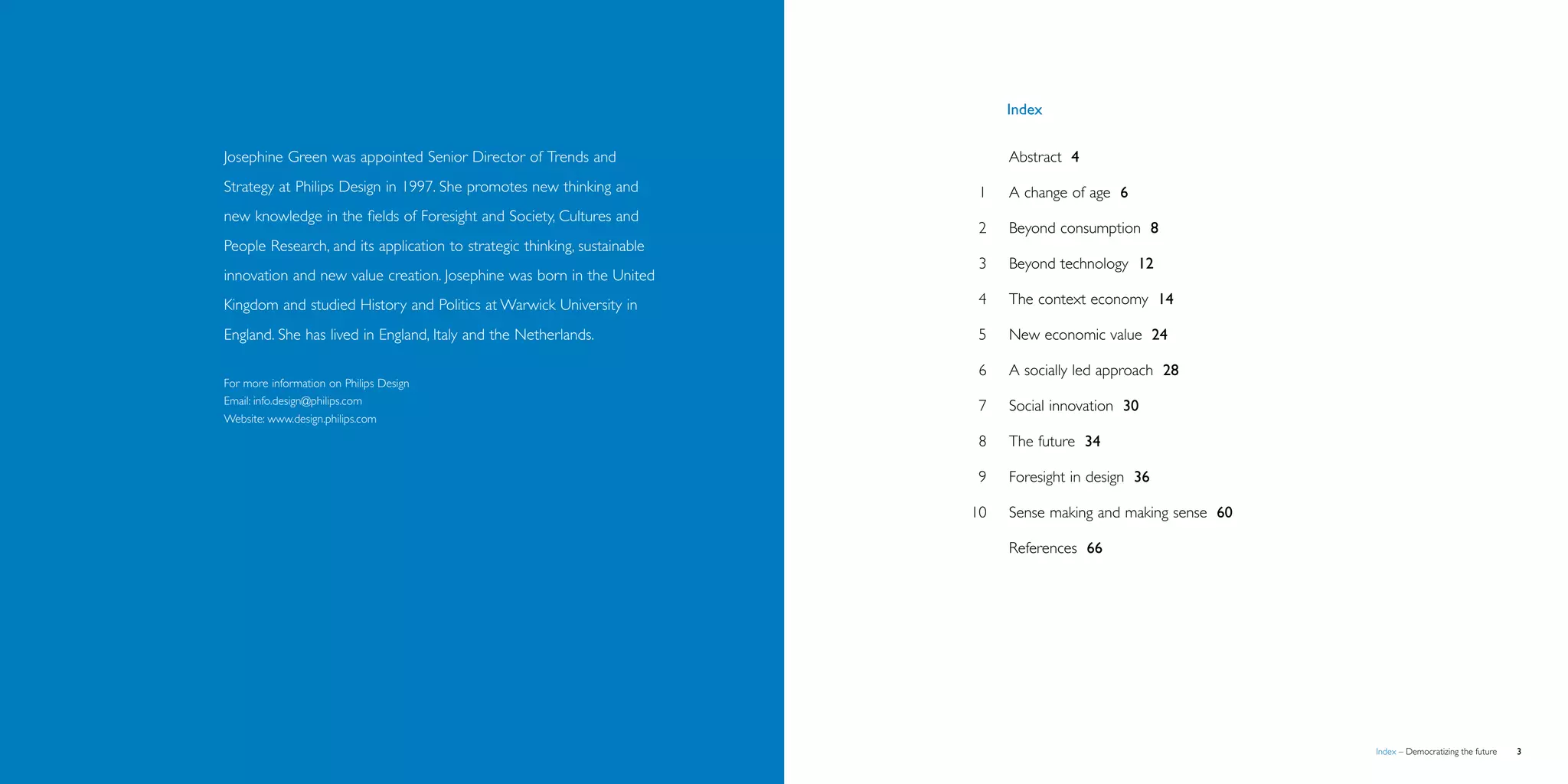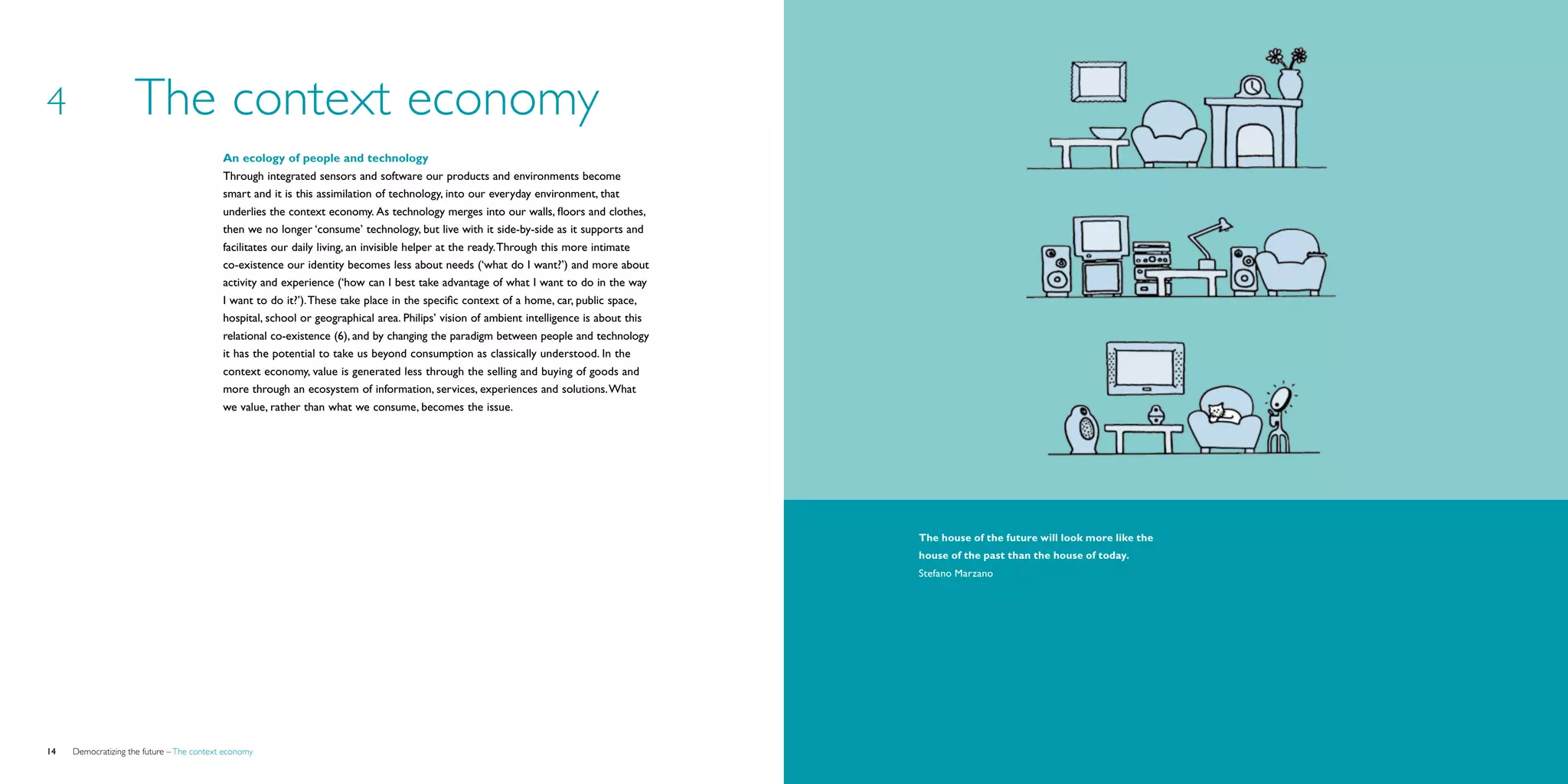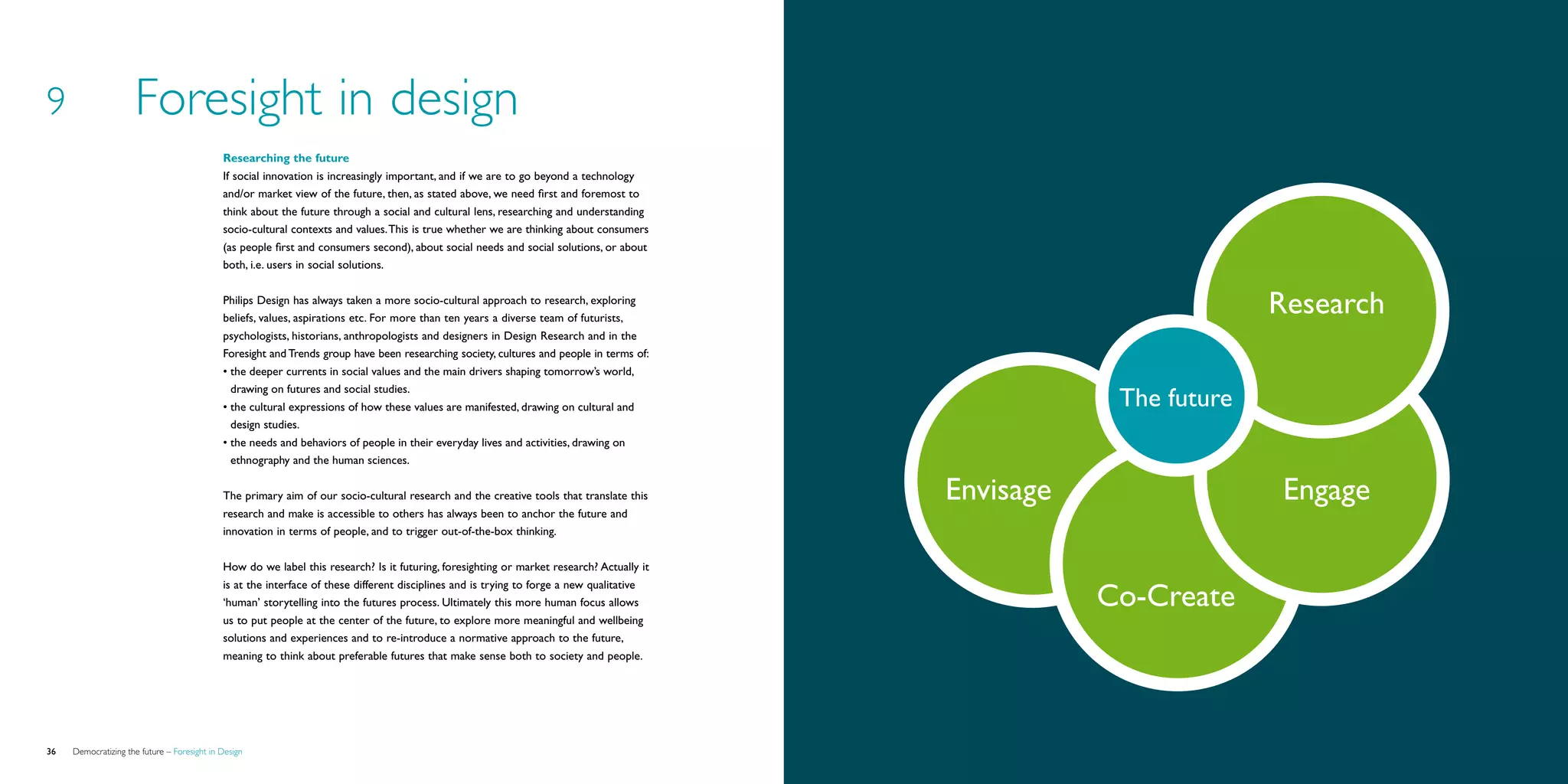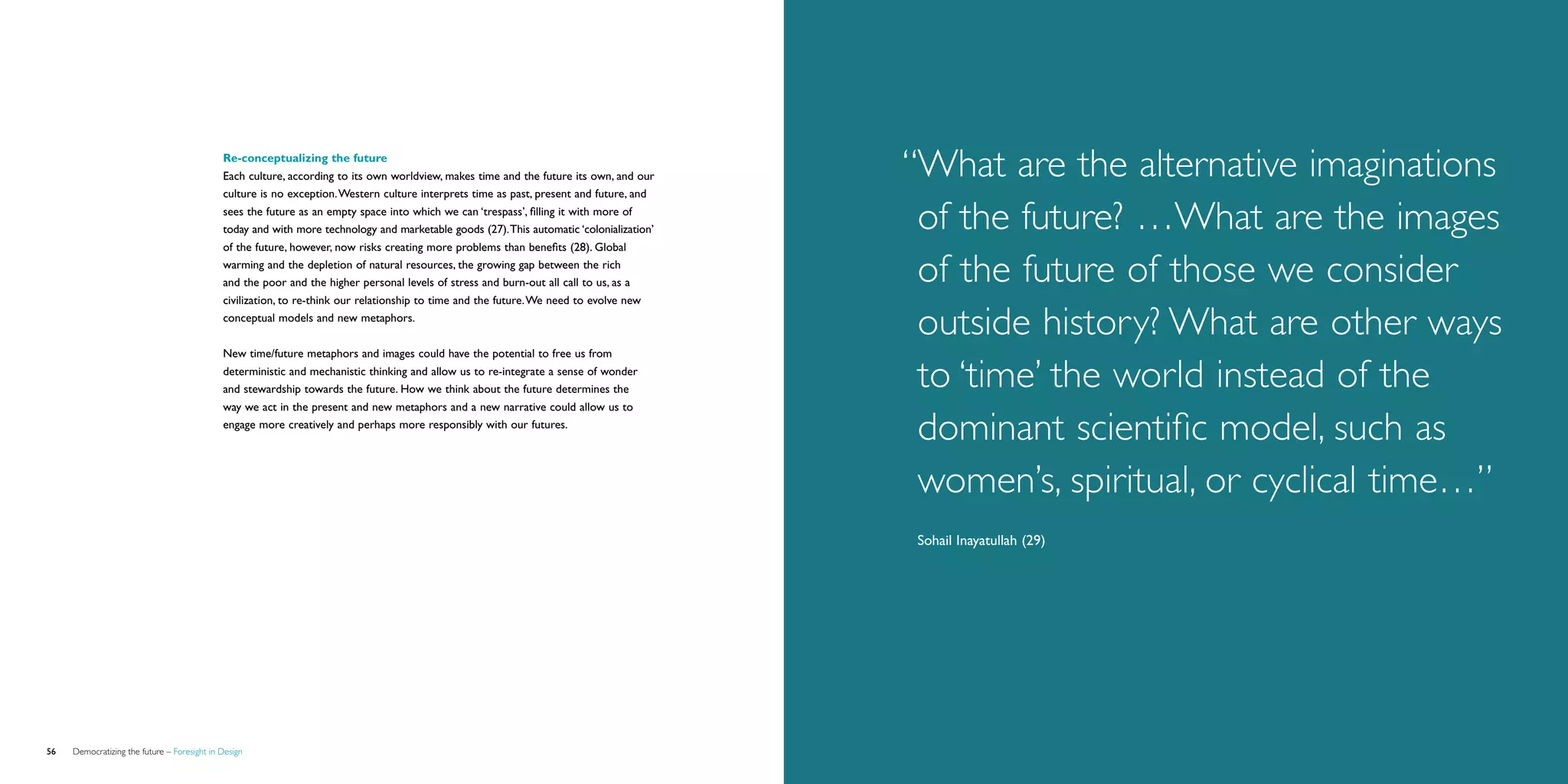1) The document discusses the need to move beyond a market-led, consumer-focused approach and adopt a more socially-led approach to drive creativity and growth.
2) It argues that new technologies enable more radical, context-based innovation through customized services and systems that can deliver sustainable solutions.
3) Shifting emphasis from consumption to services and focusing both on consumer needs and social needs means rethinking how we view and engage with the future in more open, collaborative ways.


































